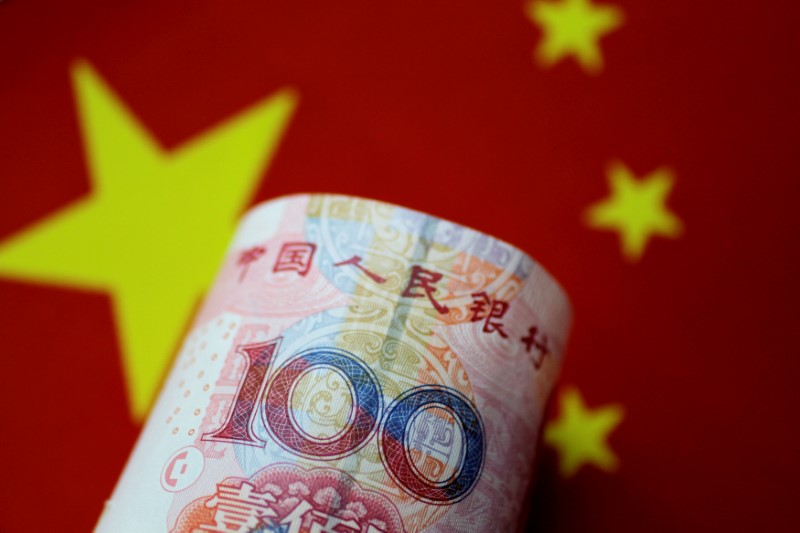* Bearish bets on Chinese yuan lowest since Jan. 2019
* Investors turn bearish on Indonesian rupiah
* Short positions rise on Malaysian ringgit and Thai baht
By Rashmi Ashok
March 5 (Reuters) - Investors lowered bearish bets on the
Chinese yuan as a U.S. rate cut gave Chinese bonds a yield
advantage, but they built short positions in the Indonesian
rupiah with the coronavirus outbreak reigniting volatility in
emerging markets.
In a bid to shield the U.S. economy from the damaging
effects of the epidemic, the Federal Reserve cut rates by 50
basis points in a surprise out-of-cycle meeting on Tuesday - the
first since the 2008 financial crisis. Aided by a weakening dollar, short positions on the Chinese
yuan CNY=CFXS stood at their lowest since early January 2019,
a poll of 15 respondents found.
The yuan immediately jumped after the rate cut to its
highest level since Jan. 23 and erased all losses it had clocked
since the Lunar New Year holiday.
Bearish bets on the Korean won KRW=KFTC and Singapore
dollar SGD= were also trimmed, with both currencies also
likely to benefit from the softer greenback.
Meanwhile, in a counter-intuitive move, market participants
turned bearish on the Indonesian rupiah IDR=ID for the first
time since late October as volatility surged in the local
markets.
Indonesia has among the highest real interest rates in the
region and its bond market usually attracts foreign inflows
owing to attractive rate differentials.
However, the outbreak of the coronavirus and resulting
uncertainty due to Indonesia's reliance on China's economy - has
now made carry-plays complicated.
"The carry trade is a low volatility strategy designed to
pick up yield in a benign market environment. The pick-up in
volatility emerging from the equity market has triggered huge
draw-downs in carry trade strategies," analysts at ING said in a
note.
"Unless one believes that policymakers with their actions so
far have put a floor under risk assets and volatility drops
substantially – highly unlikely in our opinion – it looks
premature to be buying the dip in high yield FX."
Meanwhile, investors increased bearish positions on the
Malaysian ringgit MYR=MY as its central bank cut rates to a
10-year low on Tuesday. Political upheavals in Malaysia,
following the implosion of a multi-ethnic coalition led by
veteran leader Mahathir Mohamad, also made investors wary.
Short bets on the Thai baht THB=TH also rose, after Bank
of Thailand vowed to act appropriately following the Fed's cut.
The Thai central bank had cut rates a third time in six months
to a record low in February just before the Fed made its
surprise move. In the same vein, investors reduced bullish stakes on the
Philippine peso PHP= after the central bank reaffirmed its
commitment to cutting interest rates further this year.
Reuters survey is focused on what analysts believe are
the current market positions in nine Asian emerging market
currencies: the Chinese yuan, South Korean won, Singapore
dollar, Indonesian rupiah, Taiwan dollar TWD=TP , Indian rupee
INR=D2 , Philippine peso PHP=PDSP , Malaysian ringgit and the
Thai baht.
The poll uses estimates of net long or short positions on a
scale of minus 3 to plus 3.
A score of plus 3 indicates the market is significantly long
U.S. dollars. The figures included positions held through
non-deliverable forwards (NDFs).
The survey findings ASIAPOSN are provided below (positions
in U.S. dollar versus each currency):
DDMM CNY KRW {{2034|SGD IDIDR TWD INR MYR PHP THB
05/3 0.13 0.67 0.50 0.73 -0.31 0.63 0.56 -0.18 0.93
20/2 0.52 0.74 1.06 -0.54 0.06 0.10 0.34 -0.30 0.75
6/2 0.34 0.61 0.67 -0.60 0.03 0.12 0.01 -0.15 0.37
23/1 -0.45 -0.22 -0.50 -0.86 -0.85 -0.05 -0.39 -0.43 -1.05
9/1 -0.55 -0.13 -0.56 -0.49 -0.63 0.40 -0.24 -0.23 -1.04
5/12 0.18 0.39 -0.30 -0.35 -0.63 0.44 0.25 -0.62 -1.19
21/11 -0.11 -0.37 -0.71 -0.41 -0.84 0.31 0.11 -0.64 -1.08
07/11 -0.18 -0.38 -0.48 -0.50 -1.03 0.10 0.04 -0.85 -1.08
24/10 0.25 0.07 -0.06 -0.22 -0.56 0.31 0.45 -0.29 -1.13
10/10 0.82 0.88 0.59 0.08 -0.06 0.39 0.55 0.20 -0.80
